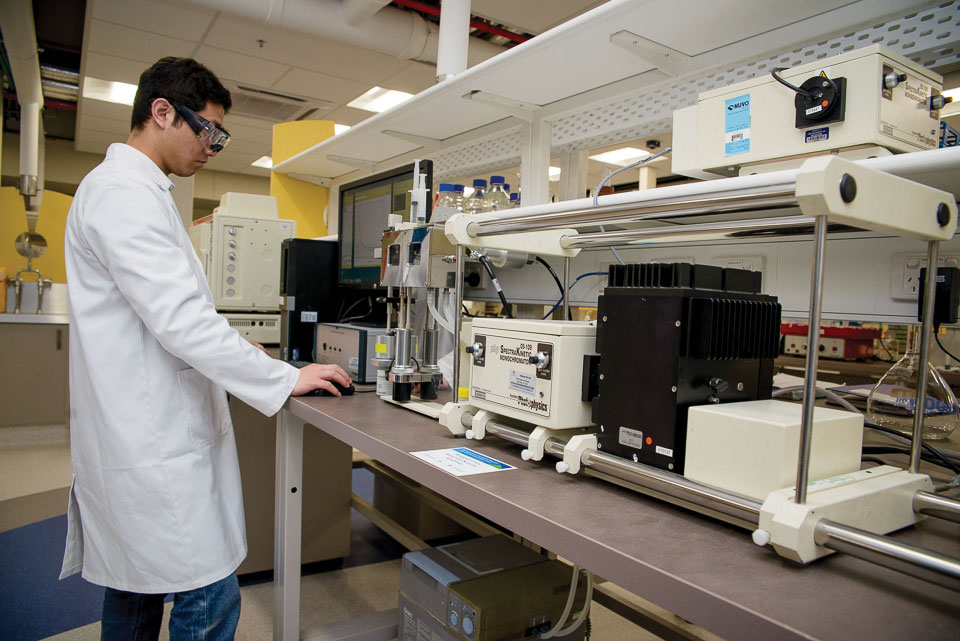Reducing the cost of implementing carbon capture and storage technologies will be the primary aim of these new Melbourne laboratories.
The University of Melbourne and CO2CRC Limited recently opened new $7.56 million emissions reduction laboratories aimed at providing clean, efficient and cost-effective energy for Australia through carbon capture.
Professor Geoff Stevens, a project leader with CO2CRC and in the Melbourne School of Engineering said the laboratories will enable the safe and cost-effective capture and deep geological storage of carbon dioxide from power generation and industrial processes.
“Carbon capture and storage will provide 13 per cent of global emissions reductions by 2050,” he said.
“It is the only technology that can be applied to energy-intensive industries such as cement, steel, chemical and fertiliser production, and it can reduce emissions from fossil fuel power generation by up to 98 per cent.”
The process involves separating the emissions from industrial processes through technologies that capture the carbon dioxide (CO2). This is then cooled, compressed and transported so that it can be injected deep underground, where the carbon will settle and remain.

CO2CRC’s CEO Tania Constable believes that carbon capture and storage (CCS) has an important role to play in tackling climate change.
“If we are to have any chance of achieving COP21’s aims then we’ll need to implement a range of responses: renewable energy, greater energy efficiency, fuel switching, and the use of carbon capture and storage as the major technology to curb industrial emissions,” she said.
“The International Energy Agency states that fighting climate change could cost 40 per cent more without CCS by 2050.”